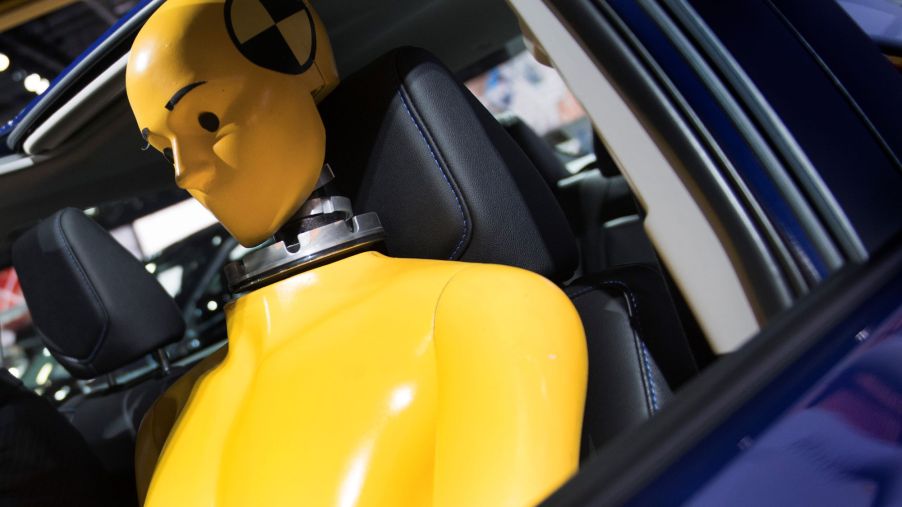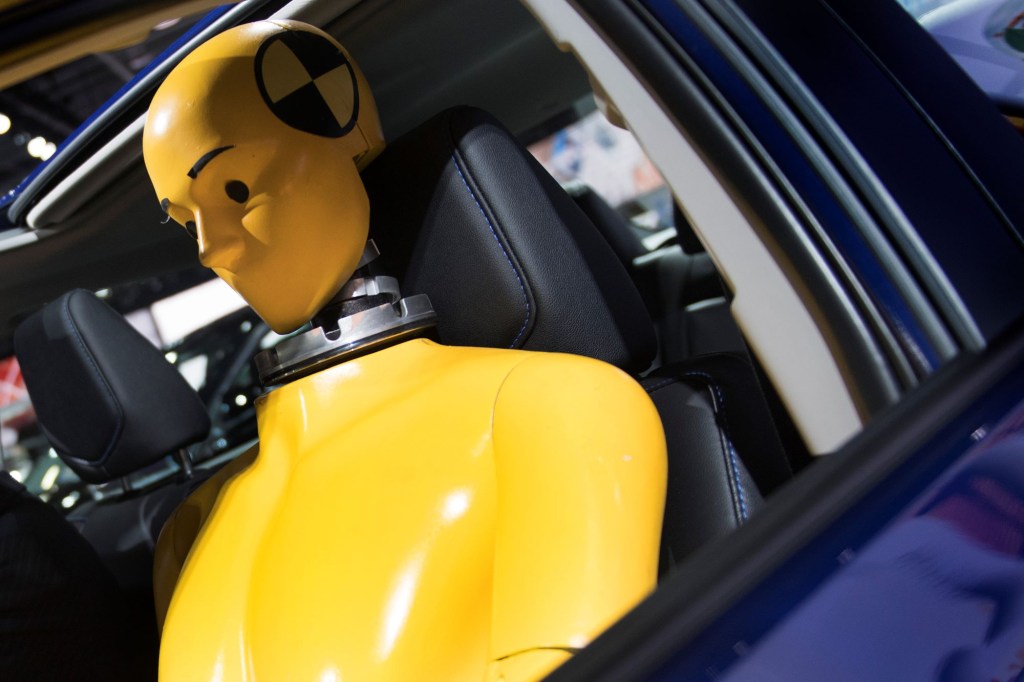
Are Crash Test Ratings or Safety Features Most Important for Protecting Your Family While Driving?
Almost all drivers are concerned about car safety, especially when shopping for a family-friendly vehicle. Today, there are more safety features on modern vehicles than ever before. When purchasing a new or used vehicle, buyers compare crash test ratings and safety features, including driver-assistance technologies. But which is more important for protecting your family while on the road?
Who are the NHTSA and IIHS?

In the United States, two organizations judge a vehicle’s safety, the National Highway Transportation Safety Administration (NHTSA) and the Insurance Institute of Highway Safety (IIHS). Armormax explains that they use different criteria to judge safety and dole out prestigious crash test ratings that buyers are looking for.
The NHTSA‘s top award is the 5-Star Rating, and they test 90 to 125 top-selling models. A 5-Star Rating is decided after conducting side crash tests, front crash tests, rollover tests, and quality and performance tests. The NHTSA uses two crash tests, the 35 mph frontal test and the 35 mph side test.
The IIHS’s best is the Top Safety Pick. They use a series of tests and give good, acceptable, marginal, or poor ratings. The IIHS runs a comprehensive series of tests, including a 35-mph frontal crash test, side pole crash test, side barrier crash test, rollover resistance test, moderate overlap front crash test, drivers and passenger-side small overlap front tests, 31-mph side impact test, roof strength, and head restraints.
Are crash test ratings a better judge of safety?
When looking for a family-friendly vehicle, safety is one of the first concerns. Which is a better judge of a vehicle’s safety, crash test ratings, or safety features? The true answer is they both are, but for different reasons. The safest family-friendly vehicles provide a combination of active and passive safety features.
Crash-test ratings from the NHTSA and IIHS are based on features that protect you in the event of an accident. These include airbags, seatbelts, LATCH systems, and active head restraints. If a crash occurs, the vehicle responds instantly to protect the occupants inside. As noted above, vehicles are run through a series of grueling crash tests to determine safety ratings.
However, driver-assistance technology is better at preventing crashes in the first place. Consumer Reports lists forward-collision warning, pedestrian detection, blind-spot warning, and similar technologies that keep drivers safe on the road and prevent accidents. All of these systems make you aware of problems to avoid them.
Are safety features involved in crash test ratings?
A vast array of features is available in modern vehicles, but not all are considered for crash test ratings. Car and Driver report that the IIHS does take advanced features like automated braking, traction control, airbags, and seatbelts into account when determining their ratings. However, they leave out components like cruise control, blind-spot warnings, or lane-keeping assistance.
According to Kelley Blue Book, the U.S. government requires some standard safety features beyond seatbelts. Front safety belts have been required since 1969. Airbags have been mandatory on all cars, light trucks, and vans since 1999. Antilock brakes became mandatory on passenger cars in 2000. You might be surprised to learn that backup cameras have been mandatory on all passenger vehicles since 2018.
Traction control, electronic stability control, lower anchors and tethers for children (LATCH) systems, and tire pressure monitoring systems are also mandatory. These safety features are taken into account in crash test ratings by both the NHTSA and IIHS.


